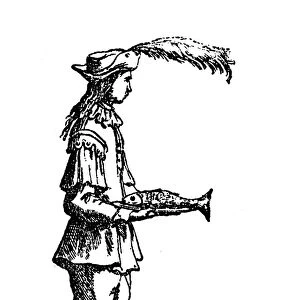Home > Europe > Germany > Berlin
Canopic jar with lid in the form of a jackal: Duamutef. Egyp
![]()

Wall Art and Photo Gifts from Mary Evans Picture Library
Canopic jar with lid in the form of a jackal: Duamutef. Egyp
Canopic jar with lid in the form of the head of a jackal: Duamutef. Third Intermediate Period. 21st-24th Dynasties. 10th-8th centuries BC. Neues Museum. Berlin. Germany
Mary Evans Picture Library makes available wonderful images created for people to enjoy over the centuries
Media ID 14332466
© Thaliastock / Mary Evans
10th Berlin Canopic Deity Divinity Dynasty Egyptians Form Four Hieroglyphic Hieroglyphical Hieroglyphs Horus Intermediate Jackal Neues Protective Sons Third Duamutef
FEATURES IN THESE COLLECTIONS
> Africa
> Egypt
> Related Images
EDITORS COMMENTS
1. Title: Canopic Jar with Lid in the Form of the Head of Duamutef, the Jackal-headed God This Canopic jar, dating back to the Third Intermediate Period of ancient Egypt (approximately 10th-8th centuries BC), is currently housed in the Neues Museum in Berlin, Germany. The jar's unique feature is its lid, which is intricately carved in the form of the head of Duamutef, one of the Four Sons of Horus and the god of mummification and the protection of internal organs. Duamutef, also known as Duametepef or Dedumose, is depicted as a jackal, an animal revered in ancient Egyptian religion for its association with the desert and the protection of graves. The hieroglyphic inscriptions on the jar confirm its identification as a Canopic jar dedicated to Duamutef. Canopic jars were used in ancient Egyptian funerary rituals to store and protect the internal organs, particularly the stomach and liver, which were believed to be essential for the deceased's rebirth in the afterlife. The Four Sons of Horus, each represented by an animal, were responsible for the protection and care of the various organs. The intricate hieroglyphs on the jar depict scenes of offerings and prayers to the gods, reflecting the religious beliefs and practices of the ancient Egyptians. The hieroglyphs are adorned with vibrant colors, adding to the visual appeal and historical significance of the artifact. This Canopic jar is a testament to the rich cultural heritage and artistic achievements of ancient Egypt, providing valuable insights into their religious beliefs, funerary practices, and artistic traditions. The jar's preservation in the Neues Museum allows us to appreciate and learn from this fascinating aspect of human history.
MADE IN AUSTRALIA
Safe Shipping with 30 Day Money Back Guarantee
FREE PERSONALISATION*
We are proud to offer a range of customisation features including Personalised Captions, Color Filters and Picture Zoom Tools
SECURE PAYMENTS
We happily accept a wide range of payment options so you can pay for the things you need in the way that is most convenient for you
* Options may vary by product and licensing agreement. Zoomed Pictures can be adjusted in the Cart.













